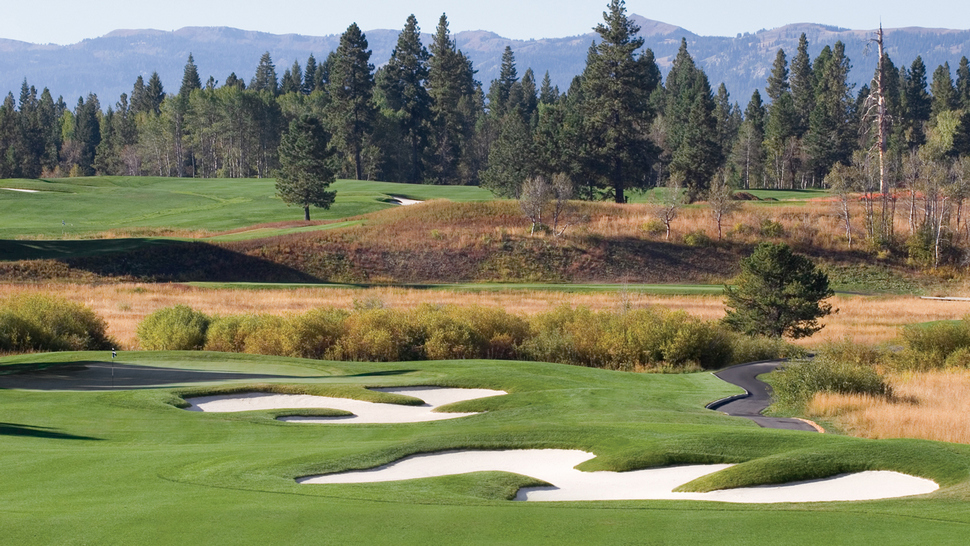Part 1
The most underrated and overrated holes at Augusta National are what?
Todd Eckenrode: The 5th has always been a favorite of mine, especially of course the green and its effects on the approach and all short-game shots in and around. Perhaps it’s underrated as it’s early in the round and not as televised or seen.
Most overrated is the 15th, just gets worse and worse with every change made.
Forrest Richardson: Underrated - among the holes I would say the opener – it's a tame intro to the course but makes knees weak around the putting surface. Just ask Ernie Els when he six-putted in 2016.
I'd also add the following holes – the par-3 4th is one where the wind may play the most role of any at ANGC. The 8th includes alps mounding that is just plain interesting. Hope they never get rid of them.
I'd also include the 11th. It's so subtle. The way the pond gobbles up balls is interesting, because you'd never believe anyone could miss that poorly. At least not the elite players.
On the overrated side I'd say is 16. I've always viewed the hole as not among the two best par-3s – the 4th and 12th are better. It's my feeling a par-3 in that position of the finishing stretch should be among the best.
Jay Blasi: Hard to judge without knowing how people rank the holes. From my visits I felt 3,8,10 and 14 were really great holes that might not get a ton of attention.
I see holes 9,11,17 and 18 you might consider overrated. My favorite is 13. And while I think 15 is a wonderful hole to watch pros play in the Masters it looked nearly impossible for members.
John Fought: The 5th is very underrated. It requires a great drive and a very difficult approach. The greens complex on this hole is one of the most interesting on the course. Par is still a great score on this hole.
I think the 9th is overrated as it has an awkward drive and the approach is straight uphill to a green that is formed in levels. It is hard for all the wrong reasons. You are never comfortable on the drive or approach on this hole.
Bruce Charlton: I think Augusta National has great par 3s. The 6th is a great downhill par 3 and very much underrated: a beautiful downhill tee shot into a very precise green set within a colorful amphitheater. It’s awesome.
I love the 2nd. As a par-5 it does not get the attention it should.
The 15th, architecturally and strategically, is overrated, but from a drama perspective, nothing beats it. It’s a good driving hole, but after that it’s penal. Everything around the green is mown very tight requiring precision and strategy.
Another underrated aspect that doesn’t get enough coverage is something found on every MacKenzie course. You need to stay below the hole at all times.
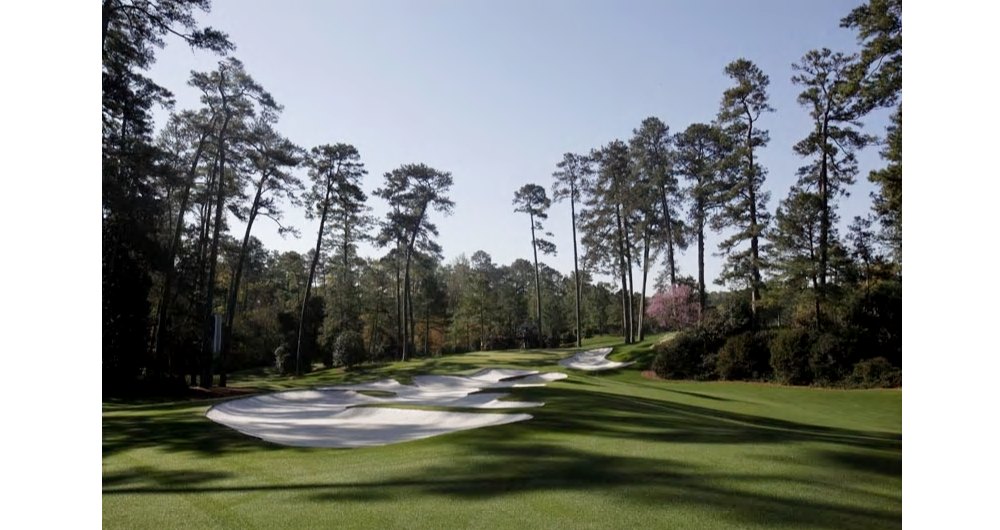
The USGA and R&A have announced that starting in 2028 a reduced golf ball will be in effect for elite competitions at the professional level. What impacts do you see a rolled-back golf ball having on the architecture for such championships as the Masters and the other three majors?
Todd Eckenrode: I think it can only help, these great courses can’t be played with as much interest with just drivers and wedges basically. I don’t know if it will solve it, but it’s the right direction in this regard for professional play on classic venues like Augusta National, Merion, St. Andrews, etc. Is it best for the golfing world, I don’t know enough about it to be honest.
Jay Blasi: Hopefully it will mean that the courses don't need to have their original architectural intent compromised -- changing fairway lines, moving bunkers, planting trees, etc., to host the event.
I doubt this rollback will be enough to have a meaningful impact but it is a step in the right direction.
Bruce Charlton: I think the rollback of the ball is actually saving some architecture of the past – like Merion. A reduced flight ball really won’t have that much of an impact, but it will help preserve some historical layouts.
Additionally, it depends on who you are designing the course for. It’s not that difficult to find a new back tee location or tee angle…or to create more hole locations on a green.
If you are building courses for majors, you aren’t really providing a service to the game. Our design goal at Chambers Bay, for example, was that all golfers would enjoy – and nobody would lose a ball during their round.
Forrest Richardson: It’s going to have some impact, perhaps mostly so by opening the door to go even further.
When people see what 10-15 yards might do to shot execution by the pros, they will be even more motivated to push for seeing what 20-30 yards might do. That that would literally be a game-changer.
John Fought: In my opinion, this is long overdue. The golf ball travels much too far for the modern game. It will allow classic courses to still be relevant.
The older course is generally land locked with no way to increase their length. I love many of these great old courses and when this restriction is finally in place it will allow many of the classic courses to be ‘in scale’.
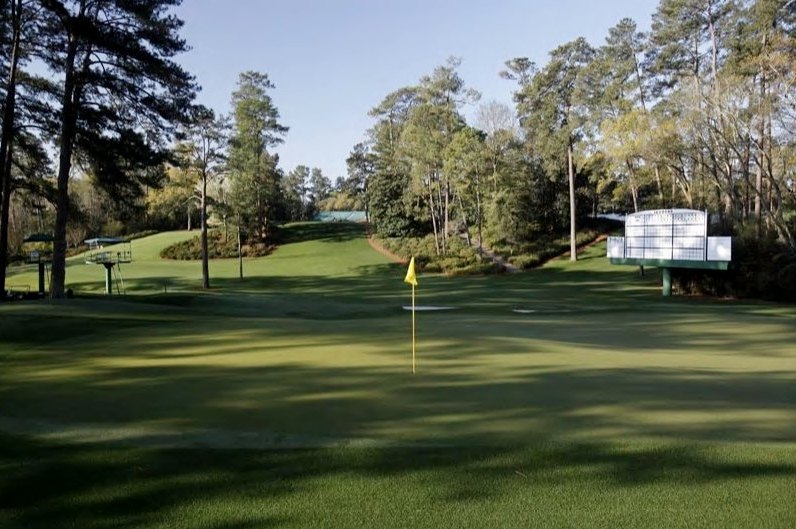
Augusta National prides itself on having demanding putting surfaces with Stimpmeter speeds that can easily reach 12 and beyond. Is there a dividing line between skill and luck when such speeds are involved and what do you see as the appropriate line to create in such situations?
Todd Eckenrode: I’m not sure the dividing line is in the stump reading. It’s probably more in the hole location based on that speed. Unfortunately, to not make a mistake in this regard, hole location options become more and more limited, which decreases many fun options, I’m sure.
Forrest Richardson: Not at the professional level. When you look at green speeds above 11, I think it is the average player who is most affected by that slick surface and what it causes.
That is where you tend to see luck and skill become all mixed up. I will admit, though, that I enjoy seeing the pros pucker at potentially rolling the ball off No. 15 back into the pond.
John Fought: All greens where the putting speed is higher (+12) must be tempered with the slope. Greens such as ANGC should not place hole locations where the slope is greater than 2.5 percent for tournament play.
Otherwise, it becomes goofy golf where a putt could roll back to you or beyond. It is vital that the green speed match the slope.
Jay Blasi: You reference demanding putting surfaces with fast speeds. ANGC greens have lots of undulation and movement. At fast speeds those undulations require touch on and around the greens from pros and top amateurs.
For high handicappers undulating greens at fast speeds is probably too much. My sincere hope would be for golf courses to have fun, interesting greens at reasonable speeds as opposed to flat, boring, fast greens.
Bruce Charlton: There’s no doubt that there should be some type of matrix that factors in green speed and slope. If we built some of the types of greens that are at Augusta National now, golfers would not be pleased, nor would they be well served.
Putting surfaces and speeds are based on so many factors. You must have an idea of the entire green surface, as well as the type of grass, time of year, weather and all these elements factor into how fast the greens should be.
Weather plays a huge role, as we’ve witnessed at numerous championships. But the professional staff at ANGC have all the tools and resources available and are at the cutting edge of green care. They know all about SubAir, drainage, mowing, grass types, inputs of fertilizers, nutrients.
It’s not all about the Stimpmeter readings. ANGC has some of the most sloping greens in the game and these are used to their advantage during the tournament. It’s a tool that Augusta can use as part of the course set-up.
They know how fast to make them or keep them. And, they are creative at setting hole locations and/or keeping hole locations in appropriate areas given the weather conditions.
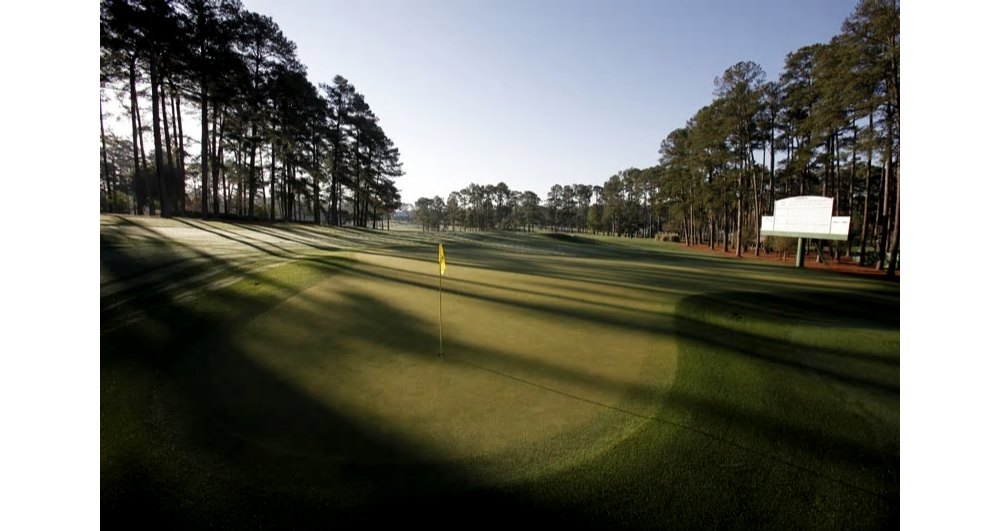
Is it truly possible to have a golf course capable in testing the best of the best players and, at the same time, provide an enjoyable experience for those at the recreational level? Jones and MacKenzie believed Augusta National could do just that. Does that belief still hold up today?
Jay Blasi: Yes. The best players in the world play a completely different game from 15 handicappers.
The things that make golf not fun for average players – lost balls, OB, penalty area, deep bunkers - are not really in play for pros. What makes a tough test for the best players are interesting ground contours, firm conditions, options and angles.
Forrest Richardson: Tees create that, especially at par-4s and 5s. Which is why I rarely rely on especially long par-3s.
When you create a long par-3, you’re basically taking away one of the truly great equalizers in the game — that one hole where players of all levels can compete on nearly the same, or mostly the same, basis.
Bruce Charlton: I’ll take it one step further. If you are a golf course architect and don’t believe that, perhaps you should seek out another profession! You can’t design a golf course solely for the best players – courses need to be designed for all levels of golfers.
John Fought: I think it is possible to make it enjoyable for most levels of players. However, this would not be the case if the greens were sped up as they for the Masters.
The tournament speeds for the Masters are much too difficult for the average player. That is why greens on golf courses are kept at 10 to 11 on the stimp meter.
Todd Eckenrode: Jones and MacKenzie believed Augusta National could do just that. Does that belief still hold up today? Sure, I think so. Fun is of course subjective. I’m someone who doesn’t enjoy being beat up on overly difficult courses, I’d rather play something less penal and with great flow, interest, variety, and not a slog of just long, tough holes.
But I have friends who want the opposite.
Regarding Augusta National, I think removing ill-advised tree plantings, removing rough, opening it up and having the ball run all over the place and restoring original bunker and green shapes and character would all play equally “difficult” and at the same time be more fun for recreational play.
Not a very relevant topic at Augusta regarding the latter, as anyone lucky enough to play would enjoy themselves, but relevant perhaps at other clubs more so.
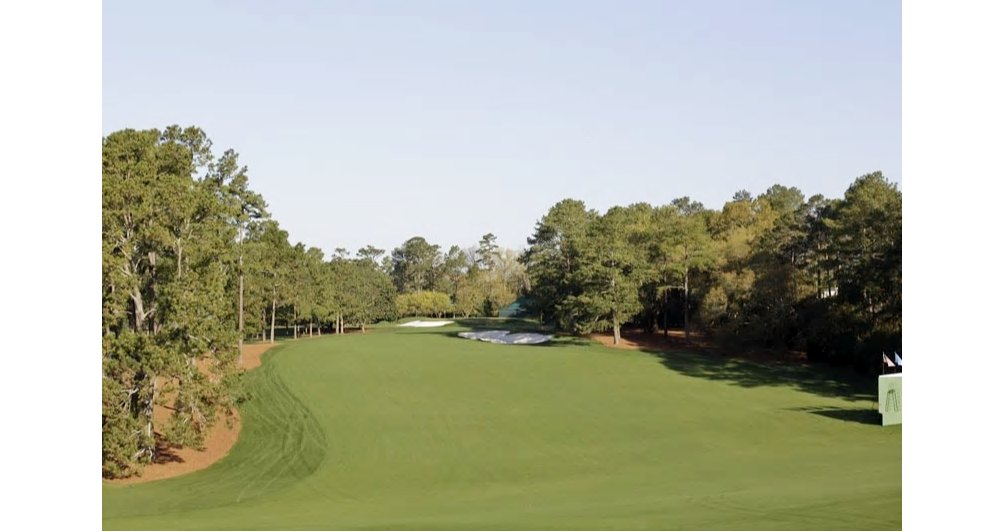
Over the course of years Augusta National has made a number of "improvements" as stated by former Chairman Clifford Roberts. Does the soul and character of Augusta National still embody faithfully the Jones / MacKenzie philosophy or should the design be more accurately described as a hodge-podge of different contributors?
Forrest Richardson: I am certain there are 20 or more people who should be credited with Augusta’s evolution. George Cobb, as just one example, is seldom mentioned. Yet he probably made the most changes and subtle tweaks. It seems as if the larger changes have gotten all the attention.
When Fazio or others have gone in to do something, let’s keep in mind that their canvas has been what everyone before them had already done. Again, there’s a lot of Mr. Cobb poking up across the whole course, yet no one seems to remember that now.
Bruce Charlton: That’s a tough question. I think that they have been faithful to the MacKenzie philosophy of “don’t get above the hole.” Some of the fairway contours are a bit of a hodge podge.
Green complexes are the beating heart of the golf course and that’s where Augusta shines. Plus, players use the contours of the greens as a strategic advantage.
Todd Eckenrode: I think the soul and character is still there in the sense that the bones are there, so to speak, the routing, select greensites, the topography, etc. It’s all restorable I would think.
But the countless changes and tinkering certainly does not allow the course to look like Jones' and MacKenzie’s original creation or what they would likely desire to see in the course today.
Jay Blasi: The general routing remains the same.
Much of the course still offers wide corridors with multiple options and lines of play. Most holes still feature interesting ground contours on and around the greens.
It definitely is a hodge-podge and would benefit from a " (Bob) Jones / MacKenzie" restoration that could easily occur in one off season.
John Fought: The routing and general concept of the golf course is generally the same. But the conditioning, bunker motif and length of the golf course is much different.
It is a wonderful test for the tournament and generally the best player wins. The improvements have made the course better but, in some cases, not as good. For example, I wish the 16th was still the hole envisioned -- a short par-3 with a creek.

Related: Masterful Misfires Pt.1
Given all the updatings carried out at Augusta National over the years – does the architecture still resonate in being especially noteworthy or is the standing of the club primarily because of hosting the annual Masters tournament?
Todd Eckenrode: Of course, the tournament elevates the course in that regard. Again, who wouldn’t want to play the course if given the chance? Is this attributable to the course itself or the tournament? I would say both really.
Could the course be better? Of course, for all the reasons I’ve mentioned and more. And maybe one day the club may realize that doing so would make the tournament better as well.
Jay Blasi: Hosting The Masters and the exclusivity of the club certainly gives ANGC a unique spot in golf. Regardless, it is a great golf course worthy of study.
Bruce Charlton: Both. The architecture of the greens is awesome and probably couldn’t be duplicated today. My favorite Sunday of the entire year—as a golf fan—is watching Sunday at the Masters.
The golf course creates a lot of drama—particularly on the back nine. The committee at Augusta knows what they are doing operationally, and the course is set up for drama. And oh baby, we do get drama. I love it!
John Fought: For me, the tournament has influenced everything. In my opinion the architecture is still noteworthy but I think it is overrated when compared to other courses who don’t have a major championship every year.
I love the tournament but not sure I would rank the course in the top 30 without the Masters.
Forrest Richardson: It’s both. When you walk across the Swilcan Bridge is it because the bridge is an amazing piece of architecture — or because of all the history that has passed across it? It’s both, of course.
Same at Augusta.
Golf architects all over the world have done their best to recreate many of Augusta’s holes, approaches and ‘looks’ — yet hardly any of those recreations are well-known or appreciated to any degree.
Augusta is an ideal recipe, and so far I think the club has stayed true to that recipe, just like a great Italian restaurant keeps balancing the old family secrets along with the new-fangled trends.
***
The Participants
Todd Eckenrode
Principal and Co-founder
Todd Eckenrode-Origins Golf Design
Irvine, CA, USA
With his partner W. Charles Davison, Eckenrode oversees all design related issues for the firm as lead designer.
Received a B.S. in Landscape Architecture from Cal Poly-San Luis Obispo, launching his career. While at the University of California at Santa Barbara, further exposure to MacKenzie’s work at The Valley Club heavily influenced his design style of utilizing a site’s natural features to promote a strong and natural “sense of place” and then forming a network of strategy and variety for the golf course.
Member, American Society of Golf Course Architects (ASGCA). Also judged the Lido Competition, jointly conducted by Golf Digest and the Alistair MacKenzie Society, and Golf Digest’s Armchair Architect contest.

The Eckenrode Story
I was so fortunate to learn the game essentially at Pasatiempo Golf Club, playing high school golf there and working there as well throughout those years. I knew it was a great course, but had no knowledge of golf course design or the history of MacKenzie really.
I was just a high school kid trying to get better at golf. When the Pro Shop would close, we would sneak out and play holes before closing up the cart barn, range etc. and come back to do those in the dark. Just getting in three or four holes was worth it, even though I could play anytime really, but it was a course that you always wanted to keep playing.
With this early exposure, I was really blindly influenced by MacKenzie’s incredible design there. There were holes I loved, but did not really know why. There was character in the routing I loved – with the back-nine weaving in and around the natural barrancas -- but did not really know why. I just knew it was a special course, was immensely fun and engaging and one I never grew tired of playing.
Coincidentally, while playing college golf at UC Santa Barbara, we would play another incredible MacKenzie course at The Valley Club every Monday. Again, just blind luck really! At this point, however, I was beginning to think about a career in golf course design. I was more aware of MacKenzie’s incredible work throughout the world, and the course became more of a study for me to learn from. But its characteristics of flow, variety in the routing, bunkering, green complex’s etc, were not lost on anyone really. Nobody passed up practice on Mondays – there was a special character to the course we all knew.
The impact of these two special golf courses really influenced me most of all in creating the interest to be a golf course designer. When you are exposed to such masterpieces, how could you not be?
Forrest Richardson
Forest Richardson Golf Course Architects
Phoenix, Arizona
Has been designing courses since the mid-1980s. Spent 25 years with Jack Snyder, mostly on projects in Arizona, California and Hawaii.
The two completed The Hideout in Utah and the Links at Las Palomas in Mexico, which were among Snyder’s last projects before his passing in 2005.
Forrest Richardson Golf Course Architects was established in 1988 and he is a past president of the American Society of Golf Course Architects (ASGCA).

The Richardson Story
I became obsessed with miniature golf when I was 6 years old. Often begging my parents and uncle to stop so I could at least take a look at the course.
A short time later I played a ‘real’ golf course, and the rest is history.
While still in high school, I met Arthur Jack Snyder who lived not far from my childhood home.
Snyder took me under his wing and showed me what golf design was all about.
Jay Blasi
Owner, Jay Blasi Design
Los Gatos, California
Born and raised in Madison, Wisconsin, Blasi moved to California in 2001 to work for RTJII and opened his own firm, Jay Blasi Design, in 2012.
In 2023 Blasi started a complete redesign of Lakeside CC in Houston and a dramatic transformation of Golden Gate Park in San Francisco. Jay's other major works include Chambers Bay (Washington), The Patriot (Oklahoma), Siebel Varsity Golf Training Complex at Stanford University (California), SentryWorld (Wisconsin), and Santa Ana CC (California).
Blasi has projects on the books in MN, WA, TX while locally he is getting ready to start a complete redesign of Poppy Ridge for the Northern California Golf Association and is guiding Sequoyah CC to a historic renovation.
The Blasi Story
Golf has been a part of my life since birth. My parents brought plastic clubs to the hospital when I was born and when I returned home there was a putting green in the backyard. From the age of four I was doodling golf holes in crayon at restaurants and picturing golf holes out the car window on road trips.
In high school I was interviewed by the state paper and asked to identify a career goal to which I replied "to design a US Open golf course".
Perhaps the most impactful moment however was when my parents actively encouraged me to pursue a degree in Landscape Architecture as opposed to business when attending college.
John Fought
John Fought Design
Golf Course Architecture
Scottsdale, Arizona
Began as a professional golfer after winning the 1977 U.S. Amateur. As a professional on the PGA TOUR, named "Rookie of the Year" in 1979 after winning back-to-back events.
When injuries forced him to leave the tour in 1987 he began a career in the field of golf course architecture.
Has worked all over North America on various types of projects from conceptual planning to award winning courses.
Fought's courses have won numerous awards including, "Best New Course," and "Best New Renovations." by leading publications such as Golf Digest and Golfweek. His courses have also held more than 90 national championships since 1996.

The Fought Story
Golf Course Architecture has always been in my blood though I never really pursued it early in my life. I became very interested in golf courses as I traveled and played various tournament venues such as Augusta National, Riviera, Pinehurst #2 and the Old Course at St. Andrews.
Early on in my career as a player I wanted to see the US Open played in my home town of Portland Oregon. This led me to seek out a mentor (Bob Cupp) and find a suitable site.
When I could no longer play tournament golf, I had the time and desire to design golf. Donald Ross courses quickly became of keen interest for me as I had played in the US Open at one of his courses and subsequently won the 1977 U.S. Amateur at Aronimink.
Bob Cupp taught me how to design a course which allowed me to pursue architecture as a profession.
Bruce Charlton
President and Chief Design Officer
Robert Trent Jones II Golf Course Architects
Palo Alto, California
Joined golf firm of Robert Trent Jones II Golf Course Architects (RTJ II) in 1981 and now serves as President and Chief Design Officer.
His body of work is global and has won countless awards and accolades. His more than 65 designs include Bro Hof Slott Stadium and Castle Courses in Stockholm; The Scandinavian Golf Club in Denmark; and Sky Hill Jeju Country Club and Oak Hills Golf Club in South Korea. He has also designed courses in Australia, South America, Japan, and dozens of courses in the U.S.
Charlton served as the president of the American Society of Golf Course Architects (ASGCA) in 2008-2009.
The Charlton Story
The 4th at Manchester Golf & Country Club, in Manchester, Iowa, is a short par-4 that runs along a country road across from cornfields. Each of the nine holes was designed in 1927 by one of the club’s founding members. Local attorney Shannon B. Charlton designed number four. And while the hole has remained virtually unchanged for 80 years, I have remodeled it numerous times in my mind.
Course design was in my blood before I was born, but I never followed the family business of law, which spanned four generations. I worked in golf from the time I was a teenager and always thought, ‘this is as close to heaven as I can be.’
My high school team competed in the state tournament but collegiate golf was another matter. I tried out at Arizona, but wasn't good enough.
Still, the Arizona climate beat Iowa, so I focused on my studies, combining classes on turfgrass, business law, and real estate, and eventually, found my way to golf course architecture.






